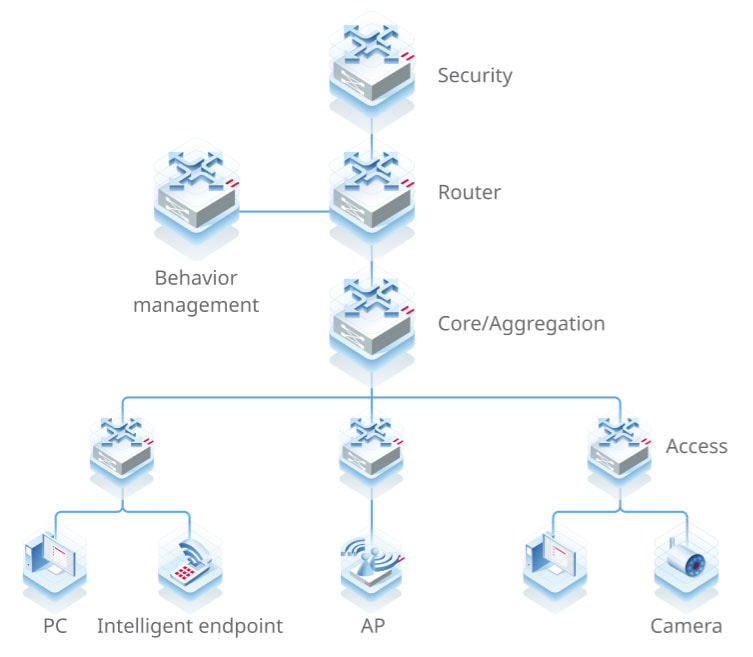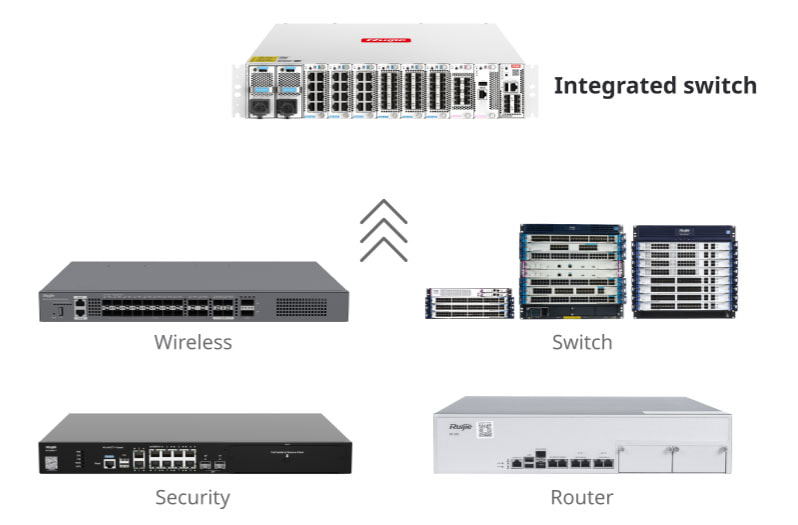Enterprise Multi-Branch Network Solution
Overview
Frequent architectural changes, low O&M efficiency, and rising construction costs pose significant challenges for multi-branch networks. Ruijie’s One Device for One Network (ODON) solution, combined with hierarchical AC technologies, enables centralized and reliable network management, streamlining operations and significantly reducing OPEX.

Challenges
Distributed Branch Network Challenges
Numerous branch and store nodes are dispersed across various locations, complicating network management and deployment.
Overloaded Cable Trays and High Costs
Excessively loaded cable trays increase construction complexity and cabling expenses, making network deployment inefficient.
Numerous Information Points and Limited Scalability
The presence of numerous information points complicates network expansion, making it challenging to scale efficiently.
Complex Architecture and Vendor Challenges
Traditional network architectures are intricate, making the O&M of multi-vendor devices cumbersome and inefficient.
Benefits

Streamlined Deployment
A simplified one-tier architecture enables a single device to serve the entire campus, ensuring easy and efficient deployment.

Cost Optimization
Minimized deployment points and simplified cabling significantly reduce construction expenses, enhancing cost efficiency.

Simplified Planning
Features like automatic loop prevention on remote modules, post-deployment planning, and zero-touch provisioning and replacement streamline the network setup process, making it effortless and efficient.

Enhanced Efficiency
Centralized policy delivery simplifies unified management and streamlines operations and maintenance, significantly improving overall efficiency.
Solution
Ruijie’s Enterprise Multi-Branch Network Solution caters to enterprises with distributed branches. It centralizes management at the headquarters with a core device that integrates switching, wireless, routing, and essential security features. This streamlined architecture minimizes construction costs, simplifies management, and supports efficient operations while fostering sustainable business growth.
Traditional Multi-Tier Architecture

Complex Architecture: Multi-tier structures and diverse device types create operational challenges.
Complicated Planning: Managing loop prevention and routing configurations adds complexity.
Intricate Policies: Scattered policies across various devices complicate enforcement and consistency.
One Device One Network for Branches
Large One-Tier Architecture

Simplified Architecture: A robust one-tier design allows a single device to manage the entire campus network efficiently.
Effortless Planning: Features like automatic loop prevention on remote modules, deployment-first planning, and zero-touch provisioning streamline network setup and maintenance.
Unified Policy Management: Centralized policy delivery ensures consistent enforcement and simplifies overall network management.
